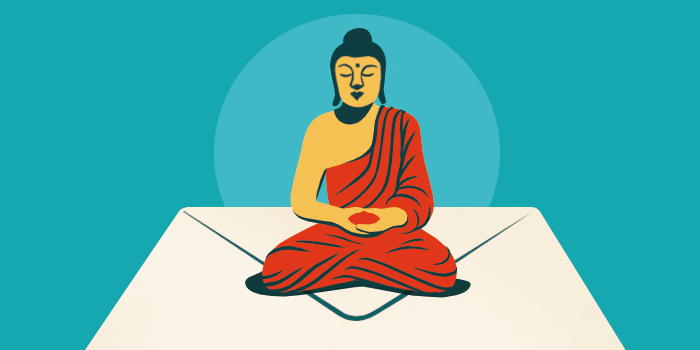Why do Buddhists go on pilgrimage?

A monk visits the Mahabodhi Temple in Bodhgaya, India, the most sacred Buddhist pilgrimage site, where the Buddha is said to have attained awakening under the Bodhi tree. | François-Olivier Dommergues / Alamy Stock Photo
Buddhist pilgrims have traveled to sacred sites for thousands of years. On his deathbed, the Buddha told his disciples about four locations “that a pious person should visit and look upon with feelings of reverence.” Those four places were Lumbini, the site of the Buddha’s birth; Bodhgaya, where he attained nirvana; Sarnath, where he delivered his first teaching; and Kushinagar, where he died. The Buddha’s instructions began a long tradition of pilgrimage among Buddhists, and these four sites now make up a pilgrimage circuit in southern Nepal and the Indian states of Bihar and Uttar Pradesh.
Over time, new pilgrimage sites were added, first places significant in the Buddha’s life and then significant places in the lives of later notable Buddhists. The Indian emperor Ashoka, an important figure in early Buddhist history, formalized many pilgrimage sites and is said to have built 84,000 stupas (shrines) containing relics of the Buddha. As the religion spread, Buddhists established sacred sites of veneration and pilgrimage in Sri Lanka, Southeast Asia, the Himalayan region, and East Asia.
The sites are tremendously diverse: active temples, archaeological sites and ruins, stupas marking the passing of Buddhist saints, and natural wonders, often sacred groves in India or heavenly mountains in East Asia. Pilgrimage sites such as the Temple of the Tooth in Kandy, Sri Lanka, are said to house relics of the Buddha or other teachers. Other sites of veneration include formalized routes, such as the 750-mile trail of 88 temples on the island of Shikoku in Japan and the 32-mile trail that Tibetans walk in circumambulating Mount Kailash.
A pilgrimage can be quite an undertaking, requiring special planning and resources; for many it is the culmination of years of practice or a lifelong goal. The journey is an important way for laypeople to generate merit and deepen and intensify their Buddhist practice. On the Shikoku pilgrimage, for example, pilgrims wear clothing signifying their special status and, like monks and nuns, are given offerings of food. Pilgrimages are also economic activities, raising funds for religious centers and regions frequented by spiritual travelers. The Buddha said that anyone who dies on a pilgrimage is assured a heavenly rebirth, since pilgrimage is a liminal space between the mundane and the sacred, and in entering it the pilgrim becomes a holy figure.
Because Buddhism varies so widely from country to country and culture to culture, pilgrimage is an important way for Buddhists to learn about cultures and traditions far from home.

Tricycle is more than a magazine
Gain access to the best in sprititual film, our growing collection of e-books, and monthly talks, plus our 25-year archive
Subscribe now